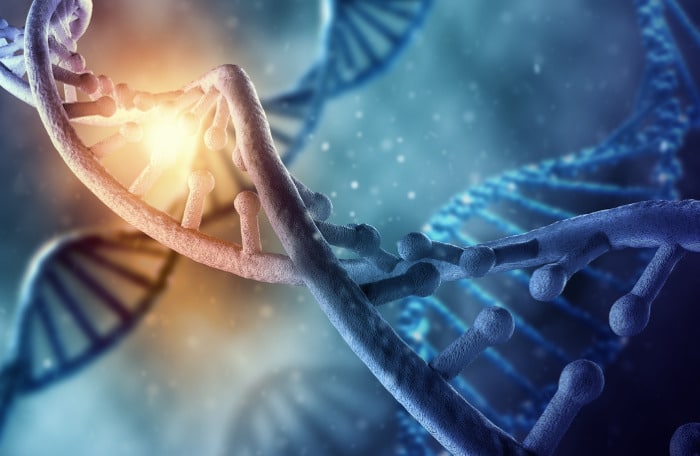CRISPR editing allows for in-depth study of leading candidate gene for autism spectrum disorder
NEW YORK, NY (October 5, 2023) – Researchers have used CRISPR gene editing, stem cells and human neurons to understand the role of a gene that is commonly mutated in autism. This new study, published today in The American Journal of Human Genetics, ties mutations in the gene CHD8 with a broad spectrum of molecular and cellular defects in human neurons.
Autism is a highly heritable disorder that is on the rise with approximately 1 in 40 children in the US receiving an autism diagnosis. Over the past decade, sequencing studies have found many genes associated with autism but it has been challenging to understand how mutations in certain genes drive complex changes in brain activity and function. The team developed an integrated approach to understand how mutations in the CHD8 gene alter genome regulation, gene expression, neuron function, and are tied to other key genes that play a role in autism.
The study was led by researchers in Dr. Neville Sanjana’s lab at the New York Genome Center (NYGC) and New York University (NYU) and in Dr. Jen Pan’s lab at the Broad Institute and includes co-authors from the Massachusetts Institute of Technology (MIT), Cold Spring Harbor Laboratory, ETH Zurich and McGill University. Dr. Xi Shi of the Broad and MIT and Drs. Congyi Lu and Alba Corman of NYGC and NYU are all co-first authors on the study, highlighting the team effort required to understand how CHD8 mutations impact neuron development and autism.
For more than a decade, it has been known that individuals with mutations in the CHD8 gene tend to have many similar ailments, such as autism, an abnormally large head size, digestive issues and difficulty sleeping. The CHD8 gene is a regulator of proteins called chromatin that surround the DNA but it is unclear how this particular gene might relate to major alterations in neural development and, in turn, result in autism.
The research team identified numerous changes in physical state of DNA. In particular, CHD8 mutations make the genome more accessible to regulators of gene expression, which, in turn, drives aberrant expression of hundreds of genes. These molecular defects also resulted in functional changes in neurons that carry the CHD8 mutation. These neurons are much less talkative: They are activated less often and send fewer messages across their synapses.
The study authors initially observed these changes using human cortical neurons differentiated from stem cells where CRISPR was used to create a CHD8 mutation. These findings were further bolstered by similar reductions in neuron and synapse activity when examining neurons from mice with a CHD8 mutation. These substantial defects in neuron function were thwarted when extra CHD8 was added to the cell using a gene therapy approach. In this case, extra copies of a healthy CHD8 gene without any mutation were added using a viral vector. Upon differentiation of the stem cells, the team found that the neurons rescued by the treatment returned to a normal rate of activity and synaptic communication, indicating that this gene therapy approach may be sufficient to restore function.
Lastly, when examining disrupted genes, the authors found that the CHD8 mutation specifically altered other genes that have been implicated in autism or intellectual disability, but not genes associated with unrelated disorders like cardiovascular disease. This suggests that CHD8 might influence selectively those genes that tend to be involved in neurodevelopmental disorders, providing an explanation for some of the clinical characteristics seen in individuals carrying a CHD8 mutation.
Additional study authors include Alexandra Nikish, and Feng Zhang of MIT and the Broad Institute; Ivan Iossifov of the New York Genome Center and Cold Spring Harbor; Yang Zhou of McGill University and Montreal Neurological Institute; and Randy Platt of ETH Zurich. The research was funded by the Simons Foundation for Autism Research (SFARI), the Simons Center for the Social Brain at MIT, the Brain & Behavior Foundation and the National Institutes of Health.
About the New York Genome Center
The New York Genome Center (NYGC) is an independent, nonprofit academic research institution that serves as a multi-institutional hub for collaborative genomic research. Leveraging our strengths in technology development, computational biology, and whole genome sequencing, our mission is to advance genomic science and its application to novel biomedical discoveries. NYGC’s areas of focus include the development of computational and experimental genomic methods and disease-focused research to advance the understanding of the genetic basis of cancer, neurodegenerative disease, and neuropsychiatric disease. We are committed to prioritizing diversity, equity, and inclusion, which is fundamental to promoting greater collaboration, innovation, and discovery. nygenome.org
